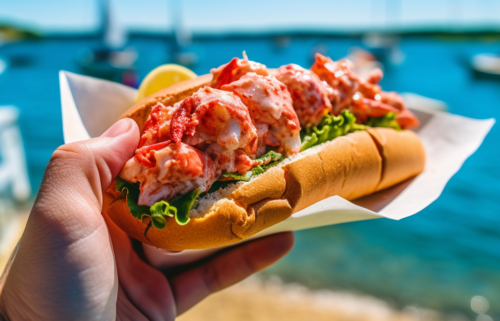20 photos of LA in the 1950s
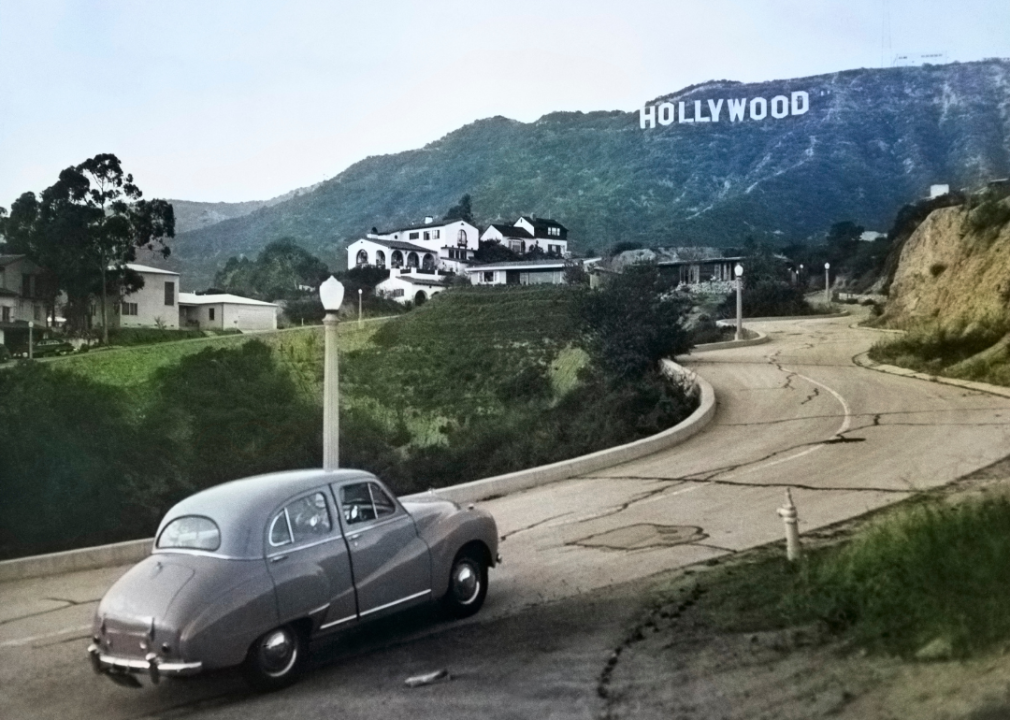
Charles Phelps Cushing/Classicstock // Getty Images
20 photos of LA in the 1950s
Car driving up through Hollywood hills
The post-WWII boom of the 1950s affected almost every corner of the country, from northern Michigan to Southern California. But few places were changed by the economic and cultural shifts as much as Los Angeles. The city grew by 500,000 people, most of whom were drawn to the metropolis for its year-round moderate climate, plethora of thriving industries, and suburban feel.
While LA had been growing steadily since the 19th century, it wasn’t yet the jam-packed city we know it to be today. Its various neighborhoods were more separated than they are now, connected by highways and interstates but surrounded by undeveloped land and forests. Residents had all the perks of a major city—a boisterous downtown, a vibrant nightlife scene, plenty of employment options, a culturally and racially diverse population—with the added benefits of smaller communities and plenty of space to build the single-family homes that had become a staple of the American dream.
It’s hard to describe exactly what life was like in LA during the decade, or how it felt like both a major city and a small town, so Giggster scoured historical archives to compile a collection of photos that exemplify what life was like in Los Angeles during the 1950s. From shots of daily life to major events like the Academy Awards, these pictures are sure to make you feel a sense of nostalgia, even if you’ve never been to LA or weren’t alive in the mid-20th century.
![]()
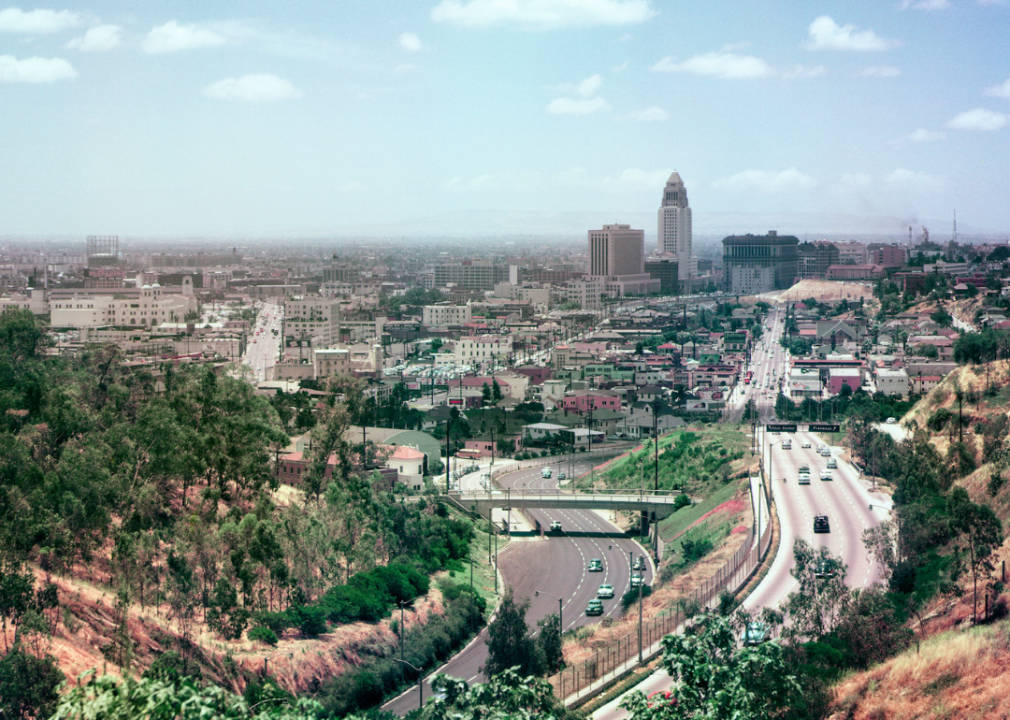
American Stock/ClassicStock // Getty Images
City Hall
Aerial city view with freeway
LA’s City Hall can be seen in the distance of this aerial shot. For decades after it was completed—until the late ’50s—a city ordinance prohibited the construction of any buildings taller than 150 feet, making City Hall far and away LA’s biggest building at the time.
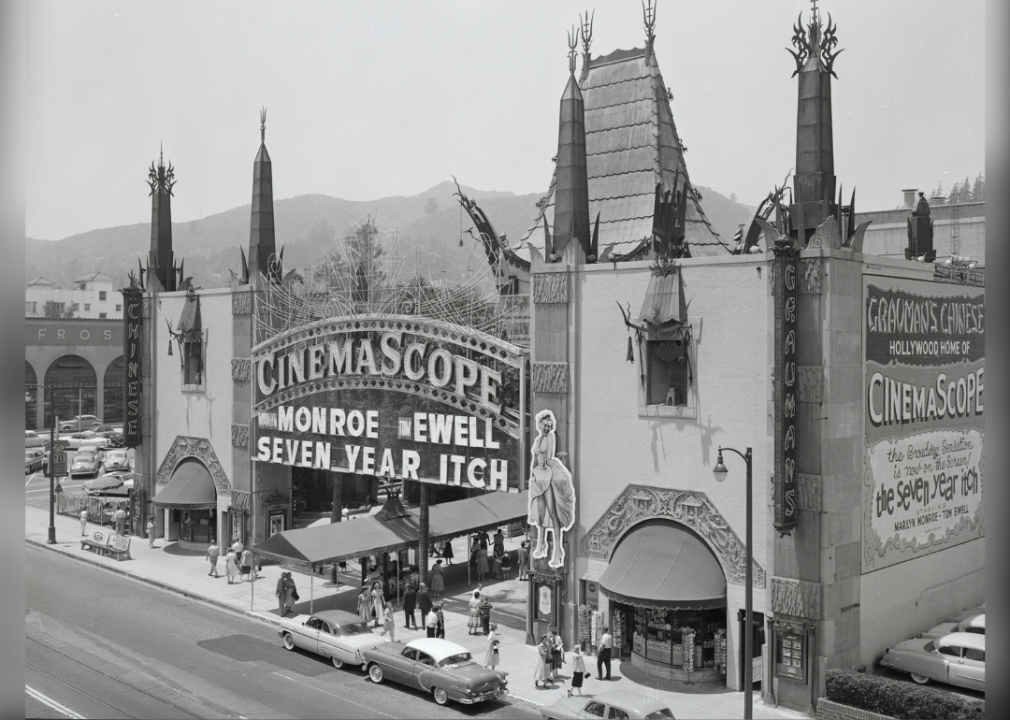
Bettmann // Getty Images
Grauman’s Chinese Theater
The Seven Year Itch at Grauman’s Chinese Theater
Opened in 1927, Grauman’s Chinese Theater has likely hosted more film premieres and celebrities than any other theater in LA. In 1950, its financier and namesake, Sid Grauman, died of a heart attack. Today, it’s known as the TCL Chinese Theatre and still hosts red carpet movie premieres.
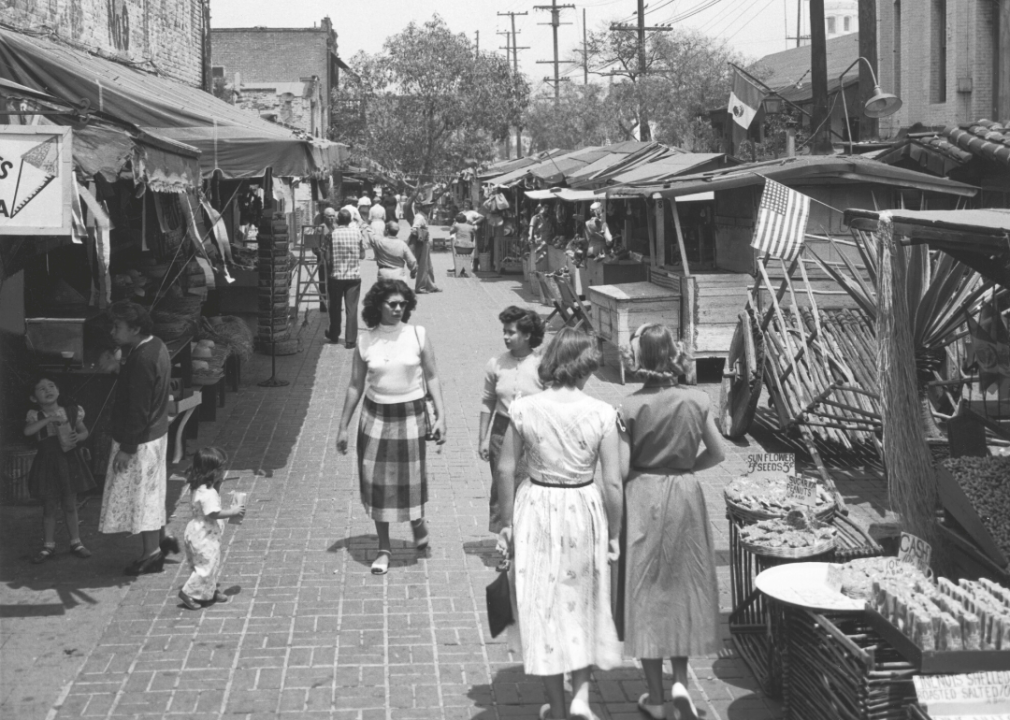
Orville Logan Snider/Frederic Lewis/Hulton Archive // Getty Images
Olvera Street
Olvera Street Market
Often referred to as “the birthplace of Los Angeles,” Olvera Street is LA’s oldest street. In the 1930s, the block-long avenue was reinvented as an outdoor mall, complete with vendors selling all sorts of Mexican and Mexican-American items as an homage to some of the area’s earliest settlers.
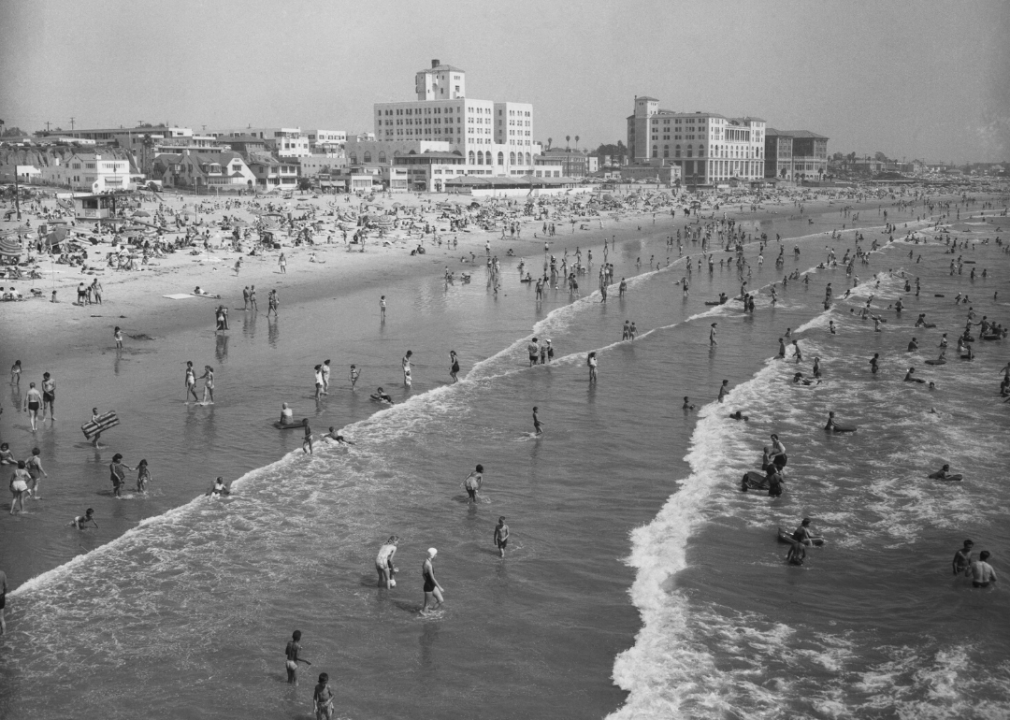
Bettmann // Getty Images
A historic heatwave
Santa Monica beach
In 1955, LA experienced one of its worst heat waves in recorded history—for eight consecutive days in late August and early September, temperatures reached highs well over 100 degrees. Desperate for some relief, Angelenos flocked to the beaches, including the Santa Monica beach (pictured above) where the archives record some 300,000 people took a dip in the Pacific.
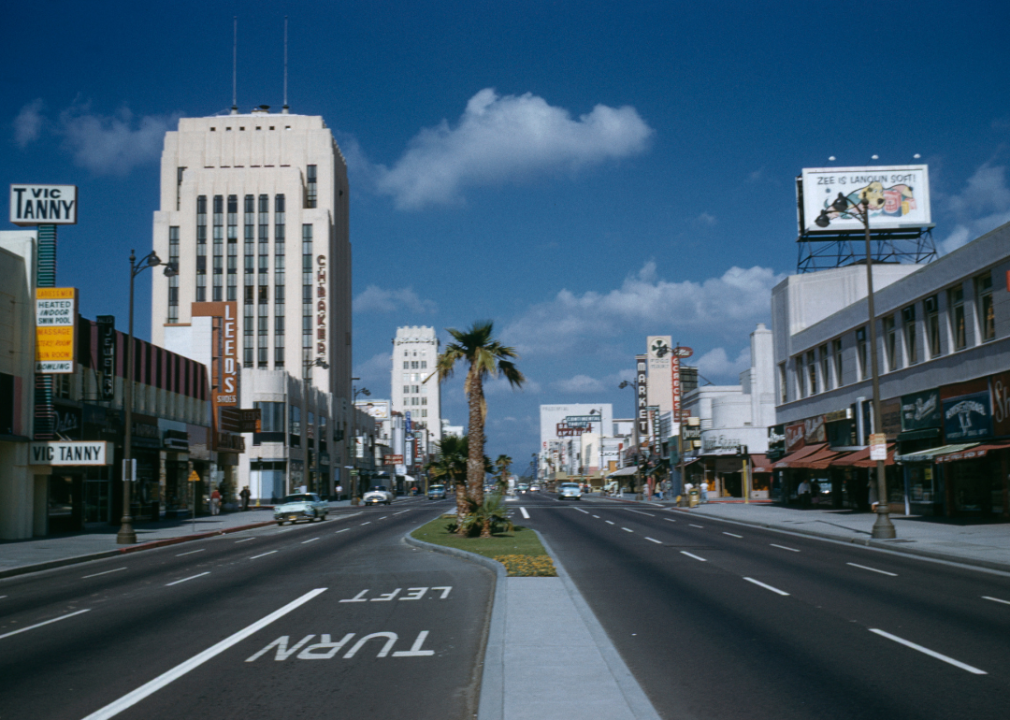
Archive Photos // Getty Images
Miracle Mile
Miracle Mile of Wilshire Boulevard
In the 1950s, Miracle Mile, a stretch of Wilshire Boulevard that is home to some of the city’s best shopping and most interesting museums, was one of the most visited parts of the city.
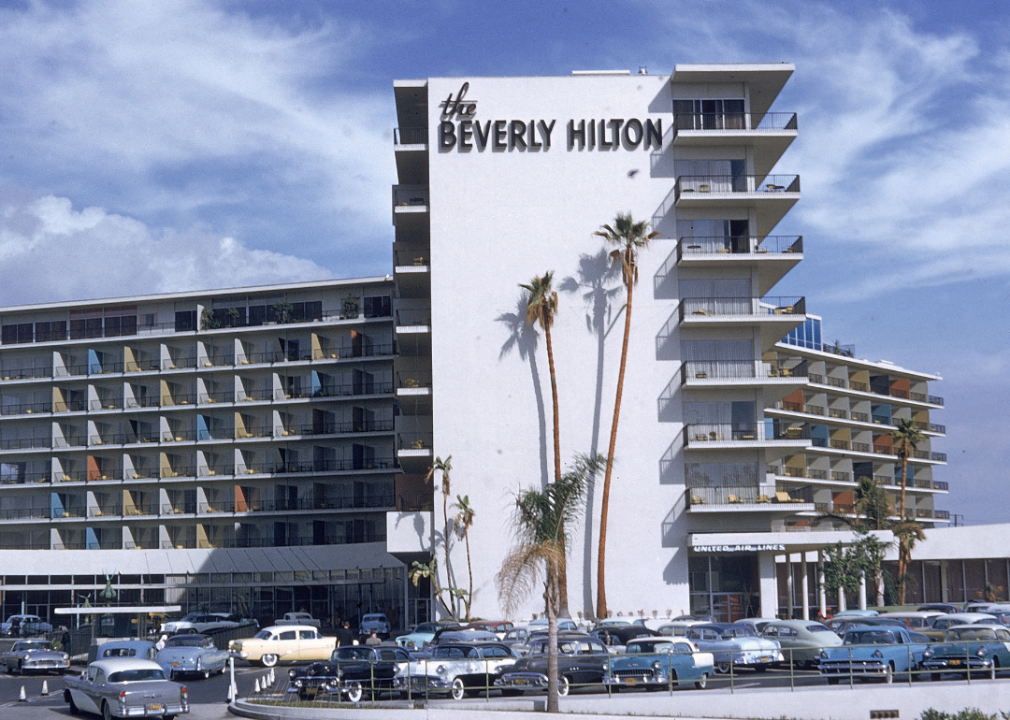
Hulton Archive // Getty Images
The Beverly Hilton
Beverly Hills Hilton
Located on the corner of Wilshire and Santa Monica Boulevards, the Beverly Hilton opened its doors in 1955. Since 1961, the glamorous hotel has hosted the Golden Globes ceremony in its grand ballroom.
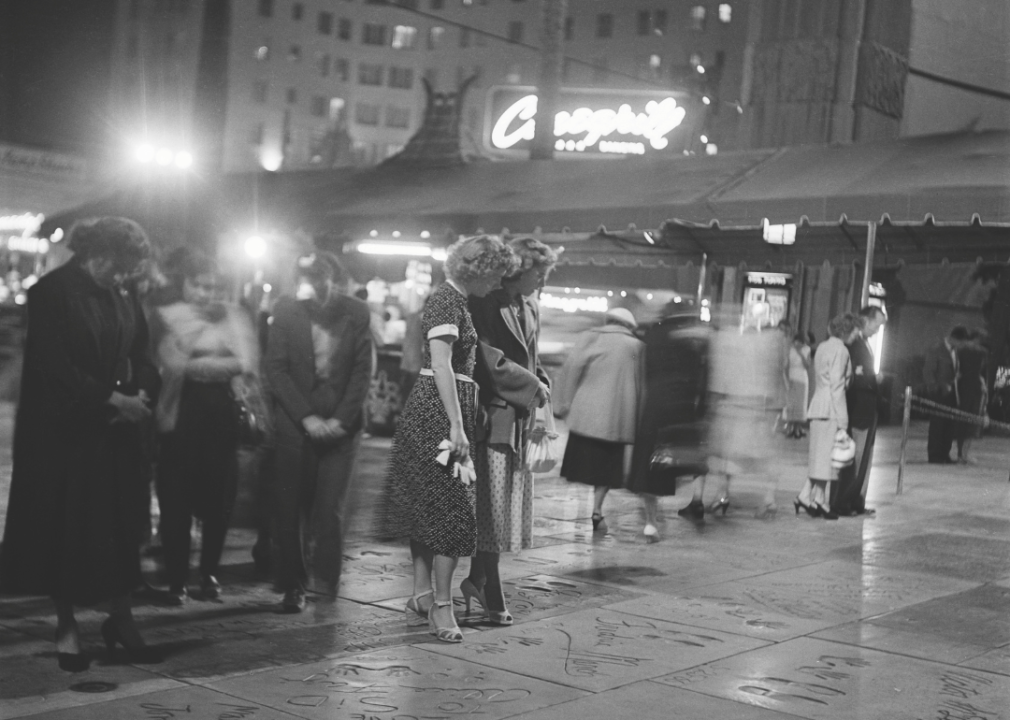
Earl Leaf/Michael Ochs Archives // Getty Images
A touristy detour
Tourists visit footprints at Mann’s Chinese Theatre
Two tourists pictured here stop to admire the concrete footprints in the courtyard of Grauman’s Chinese Theater. In the 1950s, more than two dozen major stars—including Elizabeth Taylor, John Wayne, and Marilyn Monroe—all added their hands and feet to the collection.
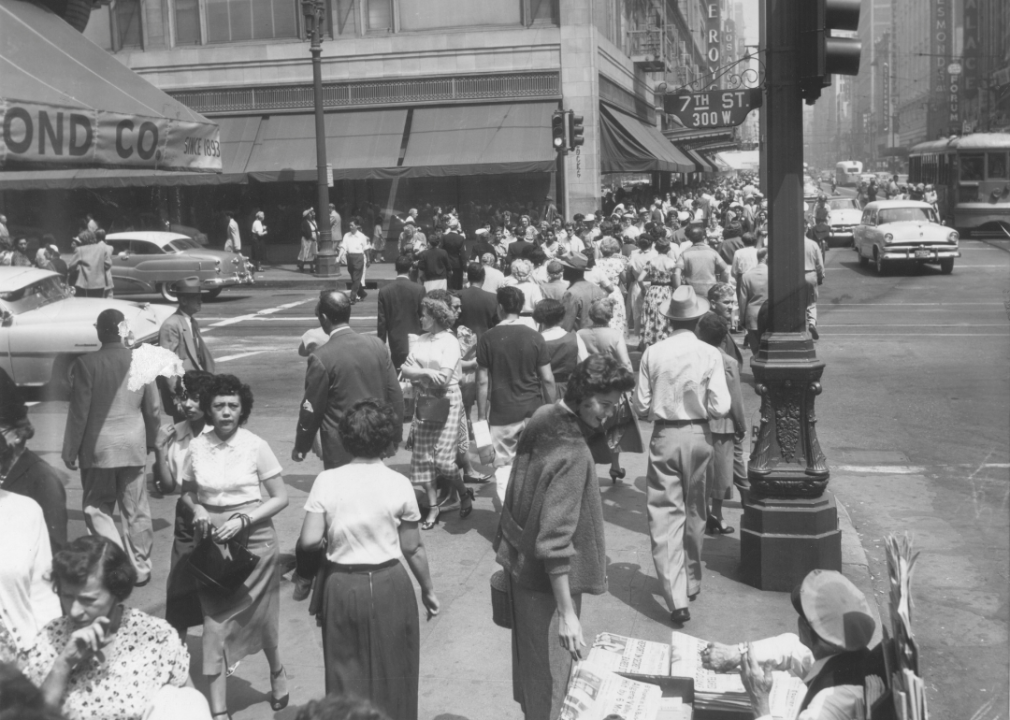
Los Angeles Examiner/USC Libraries // Corbis via Getty Images
A busy downtown
Pedestrians on Seventh and Broadway
Hoards of Angelenos, their numbers ever-growing thanks to a 1950s population boom, cross 7th Street on a warm, sunny day.
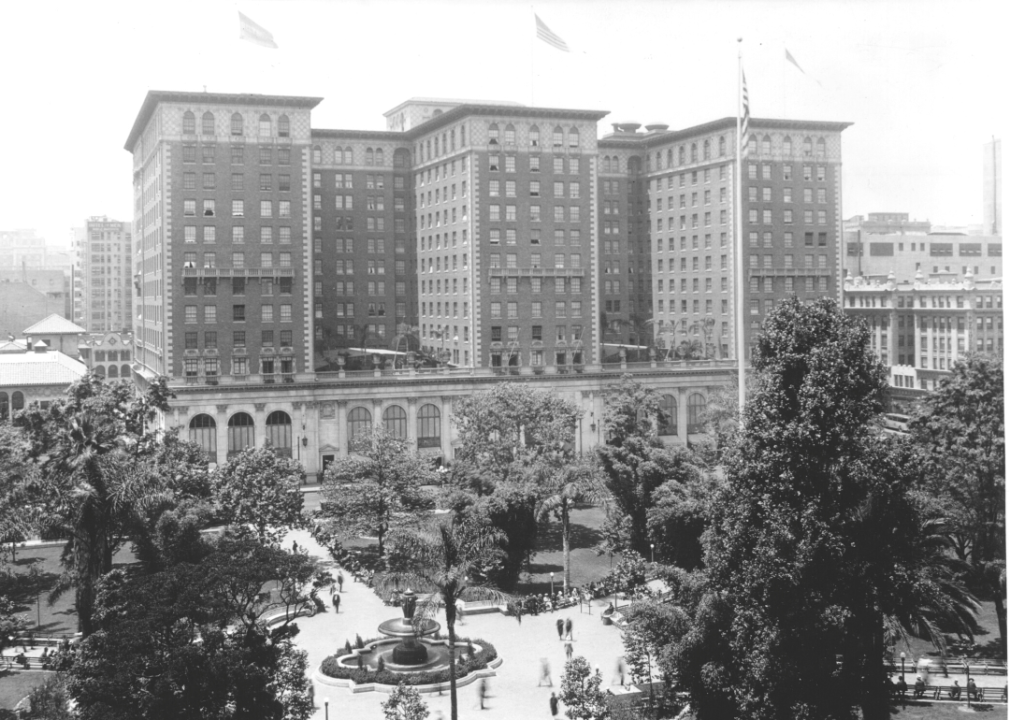
Los Angeles Examiner/USC Libraries // Corbis via Getty Images
The Biltmore Hotel
The Biltmore Hotel on Pershing Square
Once the largest hotel west of Chicago, the luxurious Biltmore Hotel is best known for hosting several of the first Academy Awards ceremonies. At the turn of the decade, the hotel played host to the 1960 Democratic National Convention.
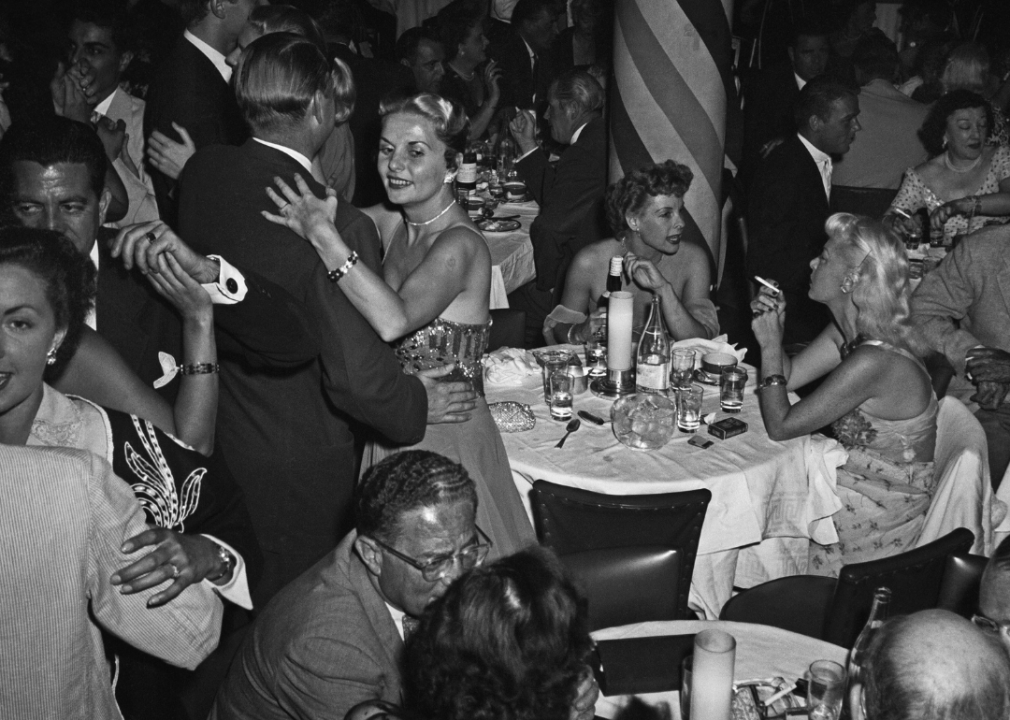
Michael Ochs Archives // Getty Images
The Mocambo Nightclub
People dance and dine at Mocambo Nightclub
In 1958, the Mocambo nightclub, a favorite with celebrities for its Latin-American decor and collection of live birds, closed. First opened in 1941, the nightclub allegedly booked jazz singer Ella Fitzgerald in 1955 only after Marilyn Monroe committed to sitting in the front row during all of her performances.
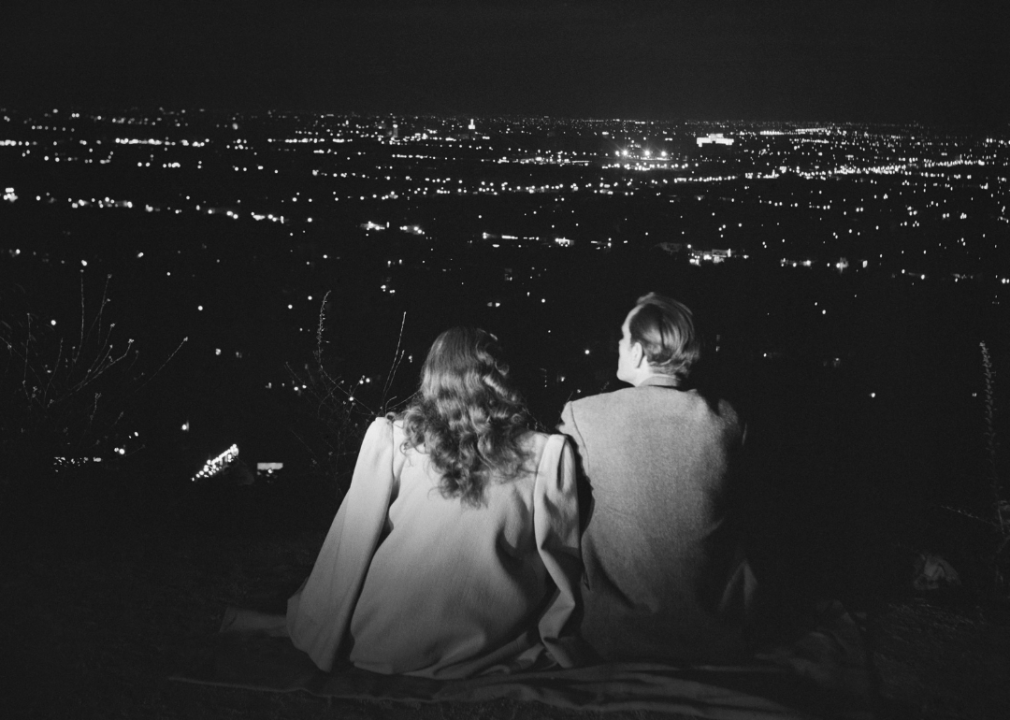
Michael Ochs Archives // Getty Images
Mulholland Drive
Couple at Mulholland Drive overlook
A young couple look out over the city from Mulholland Drive, a road that winds along the Santa Monica Mountains and boasts excellent lookout points, on a warm summer night in 1951.
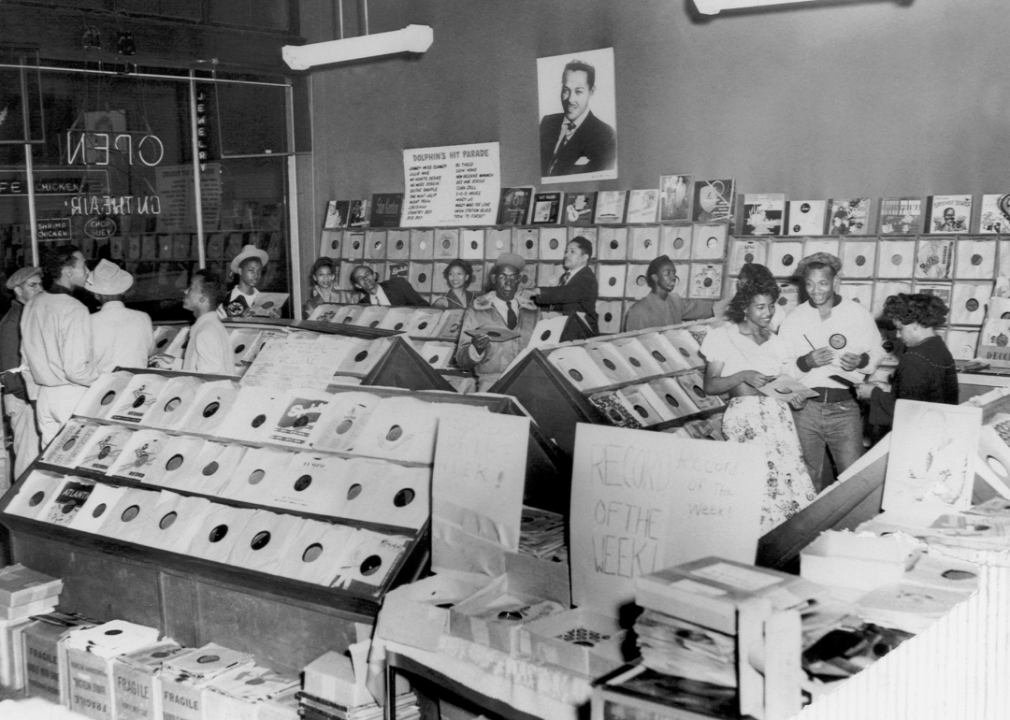
Michael Ochs Archives // Getty Images
Dolphin’s of Hollywood
Dolphins of Hollywood Records Store
One of the most famous record shops in America, Dolphin’s of Hollywood was open 24 hours a day, had live DJs spinning records in the front window, and had both its own record label and radio station. The shop’s founder, John Dolphin, was a Black man, but his store became a haven for music lovers of all races, much to the chagrin of 1950s cops who were attempting to enforce Jim Crow laws.
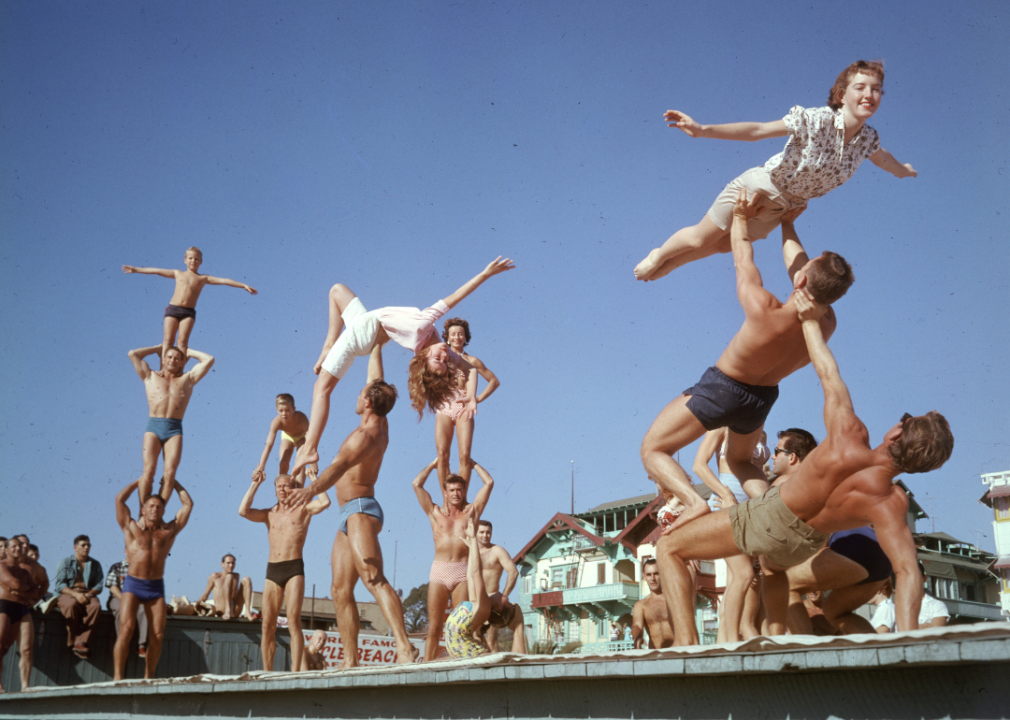
Gene Lester // Getty Images
Muscle Beach
Muscle Beach in Santa Monica
Muscle Beach, in Santa Monica, reached the zenith of its popularity in the 1950s, with folks from all over the world coming to watch its acrobats and bodybuilders do their thing. Here, a group of men and women show off their impressive skills on the area’s dedicated platform.
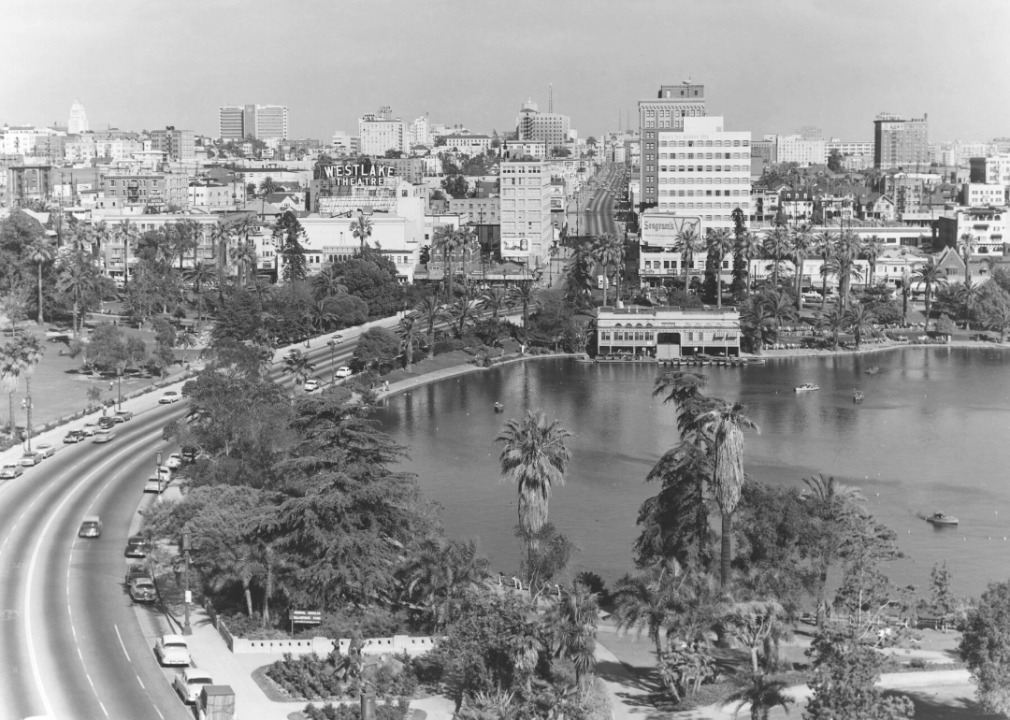
American Stock/Archive Photos // Getty Images
MacArthur Park
Aerial MacArthur Park Lake
MacArthur Park (whose lake is pictured here) has long been a center of LGBTQ+ life in Los Angeles. In the 1950s, it was a popular cruising location, and one such encounter (that went horribly wrong) sparked a legal case that got national attention.
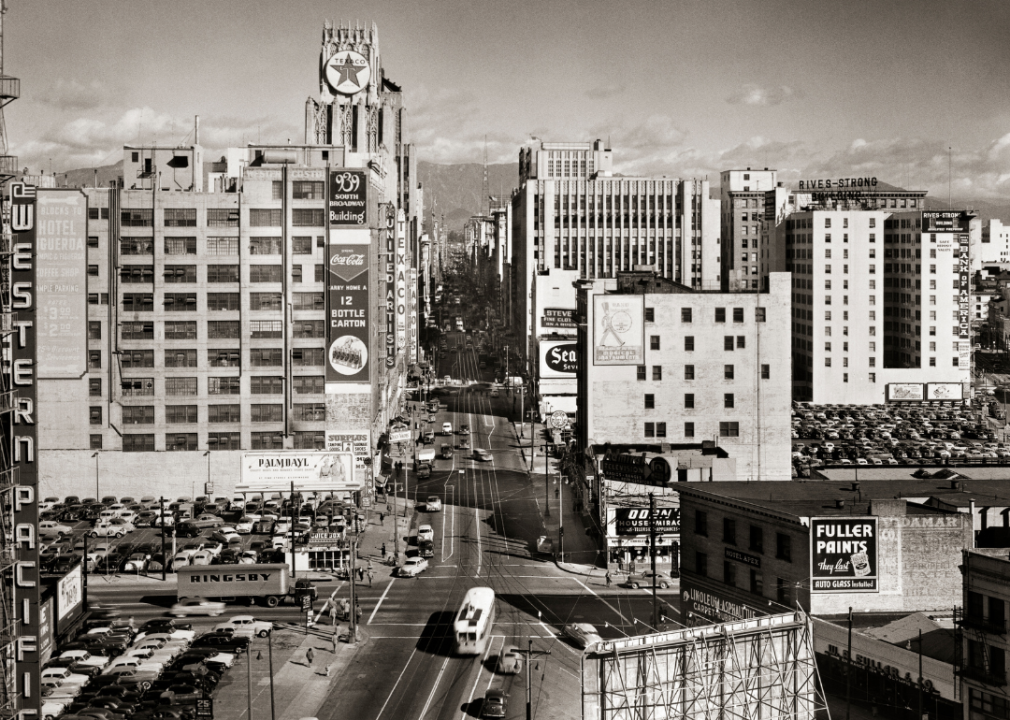
American Stock/Classicstock // Getty Images
The theater district
Downtown Aerial View of Broadway
This aerial photograph of downtown LA captures one end of the city’s historical theater districts. At its height, the six-block stretch of Broadway had the largest concentration of movie theaters in the world and could seat more than 15,000 moviegoers.
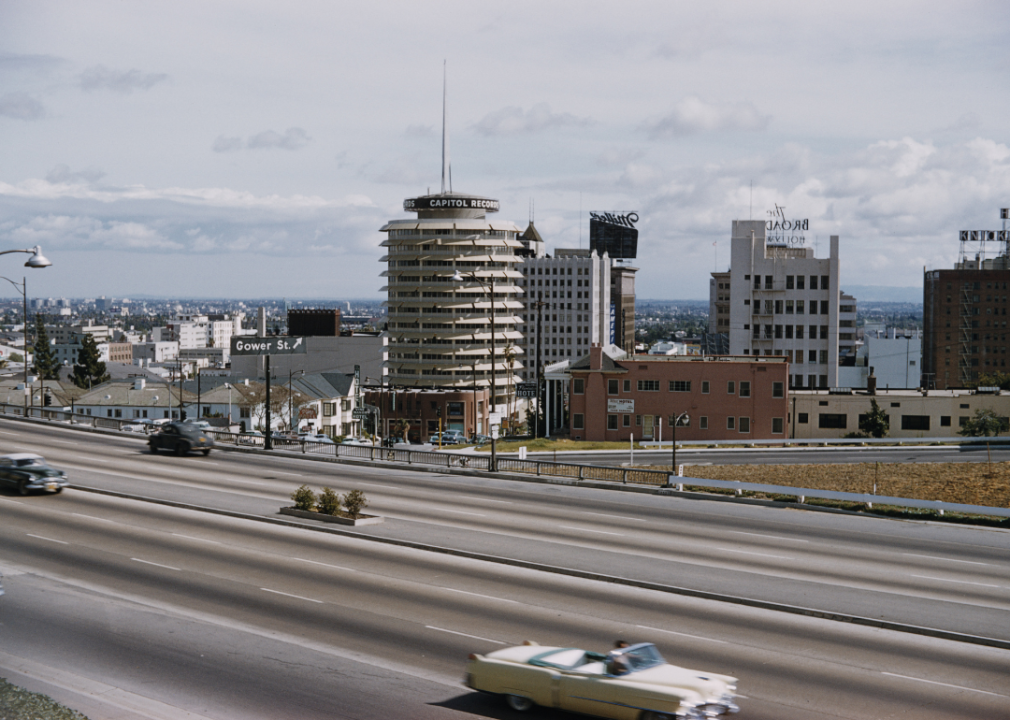
Archive Photos // Getty Images
The Capitol Records Building
Capitol Records Tower
The world’s first circular office building, the Capitol Records Building was completed in 1956. Designed to resemble a stack of records, the building has hosted music legends like Frank Sinatra, Nat King Cole, and Paul McCartney throughout their recording processes.
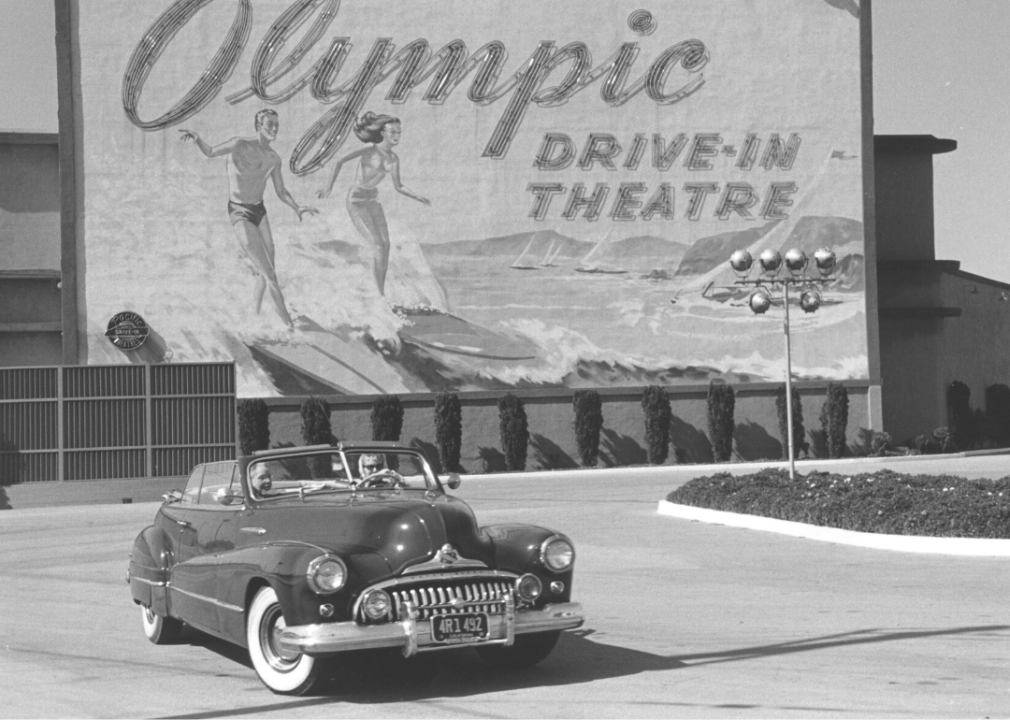
Kurt Hutton // Getty Images
An endless summer
Convertible drives past Olympic drive-in theatre sign
Nothing captures LA’s endless summer vibes quite like this picture of two women steering their convertible around a sign advertising one of the city’s many year-round outdoor theaters.
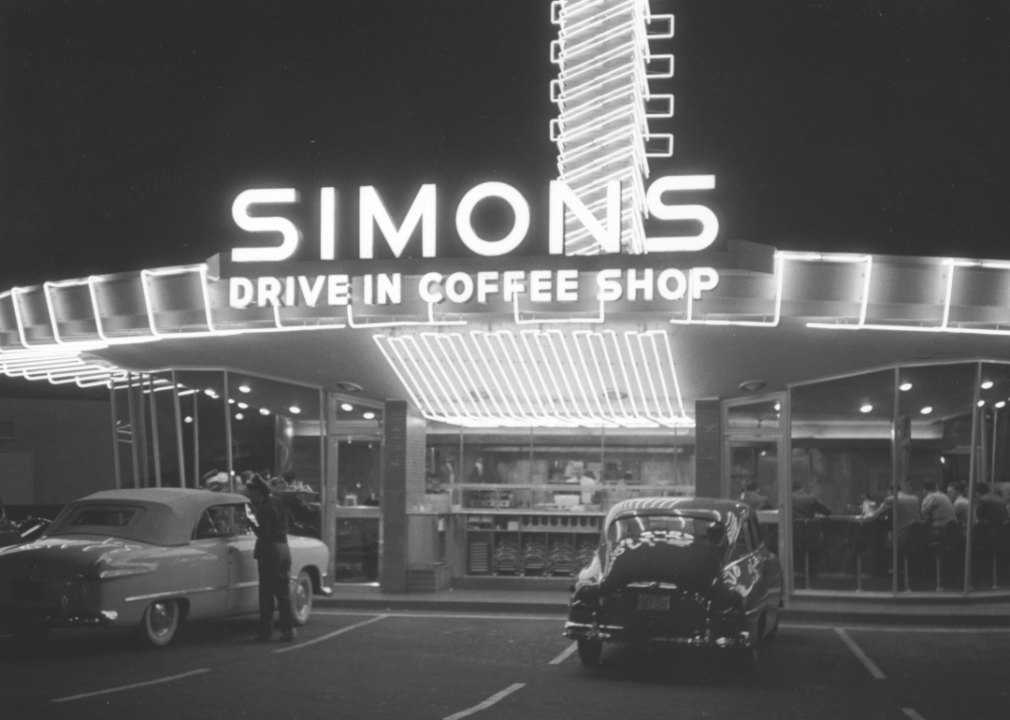
Kurt Hutton/Picture Post/Hulton Archive // Getty Images
A drive-in diner
Simons Drive in coffee shop
Drive-in restaurants were all the rage in the 1950s, and at one point Simon’s Coffee Shops dominated the LA drive-in scene. The restaurants, which offered everything from coffee to spaghetti, served patrons both outside in their cars and inside at the circular counters.
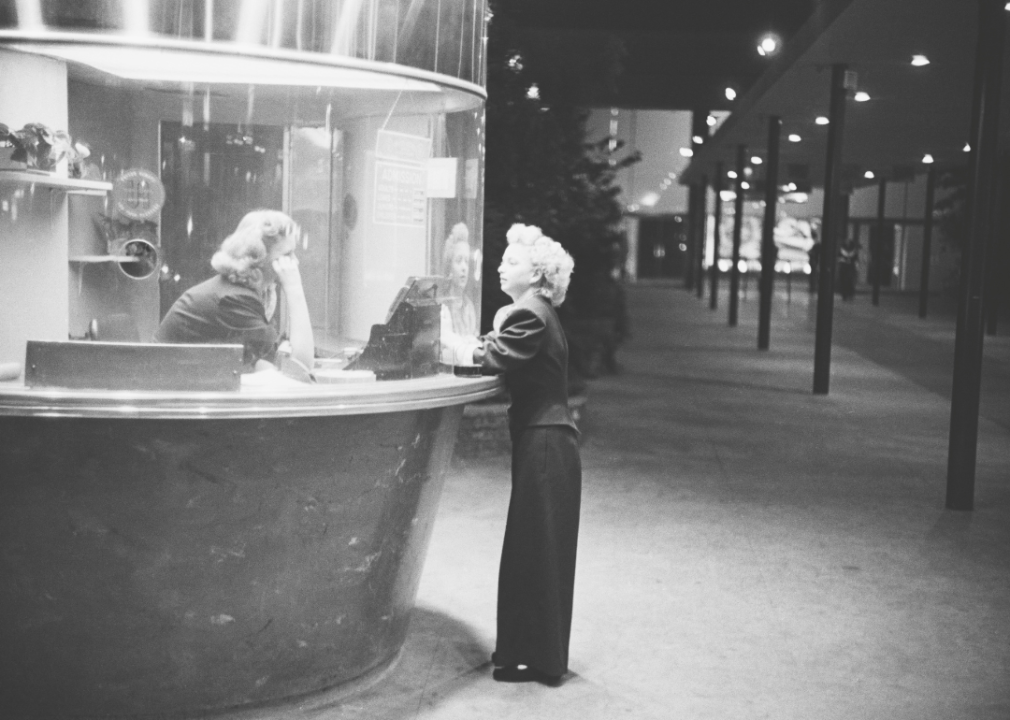
Kurt Hutton/Picture Post/Hulton Archive // Getty Images
The Egyptian Theater
Woman at Egyptian Theater Ticket Window
Most folks are familiar with Grauman’s Chinese Theater, but far fewer know about Grauman’s first foray into the movie palace world—the Egyptian Theater. Built in 1922, and the site of the very first movie premiere, the theater is now owned by Netflix (which is giving it a long overdue restoration). Here a woman buys a ticket at the location’s old outdoor box office.
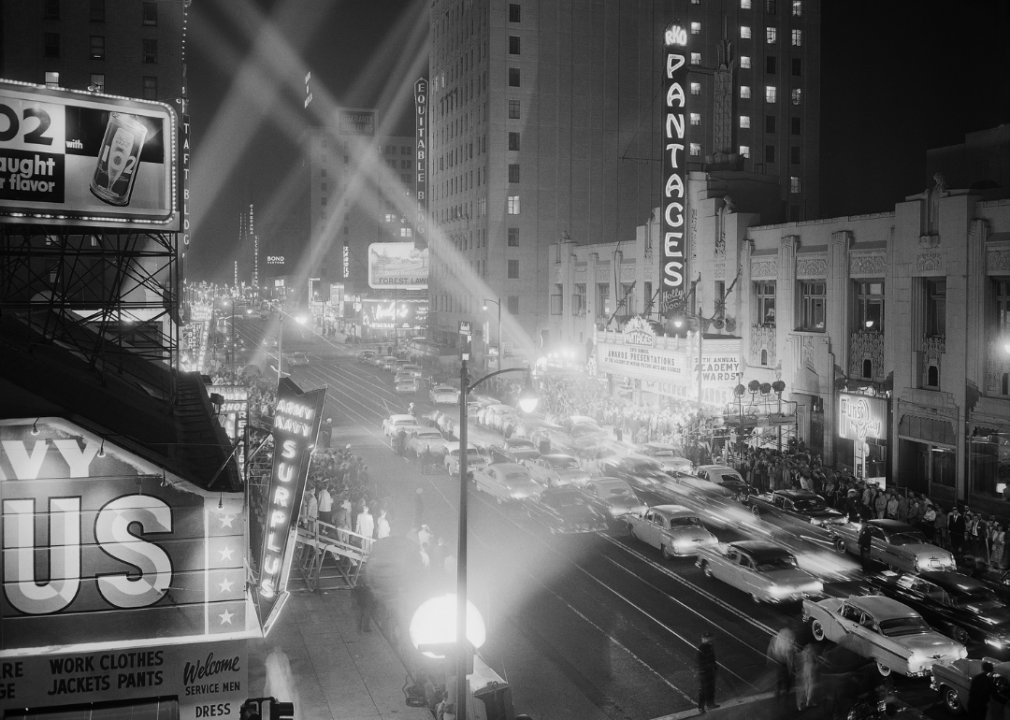
Bettmann // Getty Images
The Academy Awards
Crowd Outside of Academy Awards Ceremony
Hollywood Boulevard teams with people and glows with lights on the evening of the 28th Academy Awards. The big winner that night was a film called “Marty,” starring Ernest Borgnine, which took home the trophy for Best Picture.
This story originally appeared on Giggster and was produced and
distributed in partnership with Stacker Studio.



